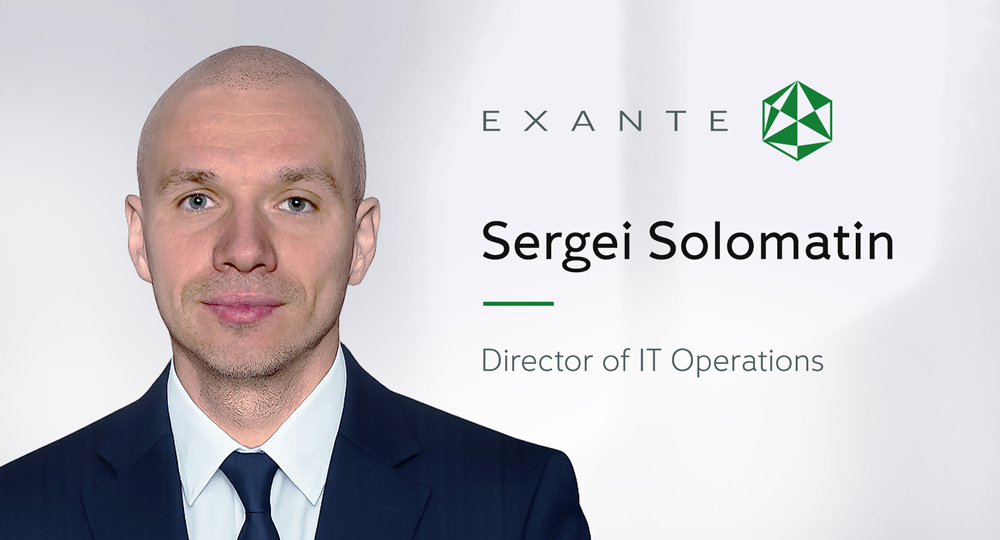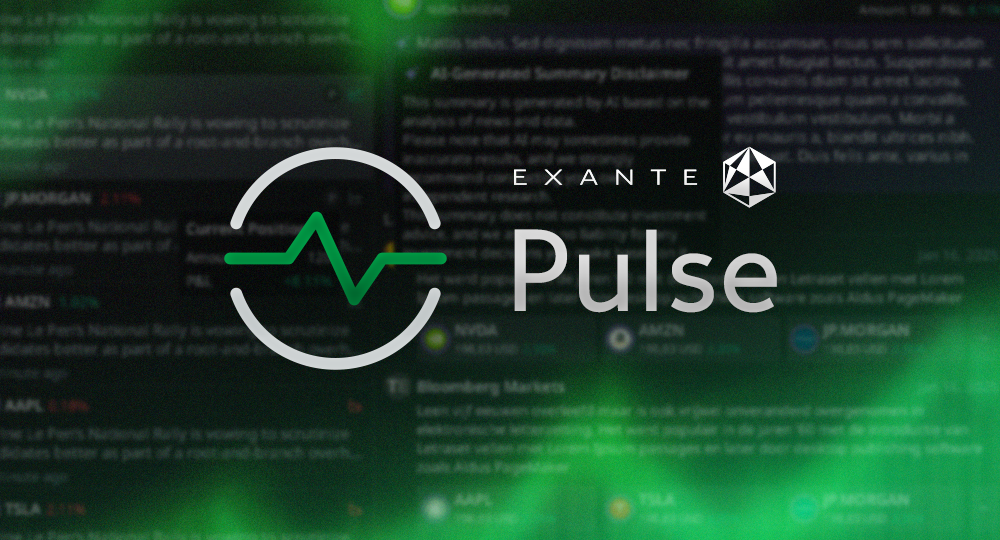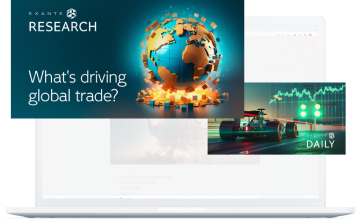By Renée Friedman, PhD
Welcome to our first Macro Quarterly Insights. We will be taking a look at what has happened in the world of global economics and finance over the past quarter and what events and actions may impact markets in the next few months.
A short global overview
The third quarter of 2021 started well for equities; major economies were emerging from Covid with vaccination rates well above 70% and travel and other service industries starting to re-open. However, it ended with gains eroding as rising inflation and questions about its stickiness, given the rapid rise in oil, gas and electricity prices following these economic openings and lower than anticipated wind energy supplies, stoked inflationary pressures that could threaten the global recovery. The continuing supply chain and shipping bottlenecks, the collapse of Evergrande in China heralding slower growth there with the consequent drop in demand for global imports and exports, and the spread in the Delta variant contributing to labour shortages, especially in emerging markets where vaccination rates are much lower, led to growing concerns around growth prospects that will likely continue to be fretted over well into Q4.

As inflation went past central banks 2% targets, global markets were focused on when and how fast the US Fed would begin its taper of asset purchases and when they may consider a rate rise. The Fed’s September statement and subsequent statements by the chair Jerome Powell and other Fed officials, have pretty much guaranteed a taper announcement in November. Fed funds rate projections showed a faster hiking schedule during Q3, as 10 year bonds reached yields not seen in years. Strong earnings had lifted US stocks as the opening of the economy promised growth of up to 7% but was later downgraded to less than 6% for 2021. In Europe equities were pretty flat in Q3 with only the energy and tech stocks seeing real growth. As in the US worries emerged over inflation due to supply chain bottlenecks and rising energy prices. Wholesale gas prices in Europe have doubled since mid-August, oil is up at least 20%, and coal futures are also significantly up (about 50%). Although annual inflation in the Eurozone came in well below US levels (at an estimated 3.4% in September vs 4.2% in the US) and the ECB said it is willing to tolerate a moderator and transitory overshoot of its 2% inflation target, the pressure is piling on as growing energy shortages, uncertainty over Germany’s new government coalition and the impact that will have on fiscal policies across the region, and structural unemployment issues related to skill mismatches come back into play.
In the UK equities rose over Q3 but threats of rising inflation from supply bottlenecks and rises in food and energy prices and slower growth will continue to weigh into Q4. The Bank of England’s hawkish tone means that a rate rise is already priced in for December with an expected rise of 0.5% by March 2022.
In Asia, confidence was hit by the Evergrande collapse in China, the sell off in tech and education stocks following regulatory tightening by the Chinese authorities, and the uncertainty around the outlook for the Chinese market and the spillover that will have on regional economies growth prospects.
Emerging market (EM) equities declined in Q3 due to concerns over continued supply chain disruptions and worries over the implications of higher food and energy prices for some markets and the re-imposition of some Covid-19 restrictions.

In Latin America, Brazil was the weakest market as inflation continued to rise above target and the central bank responded with further interest rate hikes. Weaker industrial metals prices also weighed on the performance of net exporter markets Peru and Chile while energy exporters Russia, Colombia, Saudi Arabia, and the UAE all benefited from the OPEC+ agreement not to raise production amidst a global demand spike.
What to keep in mind for Q4 2021
Just when we thought we made it through the worst of Covid (and its various variants), growth was back to and even surpassed pre-pandemic levels, and the overall outlook for 2022 seemed rosier, there are still some potential bumps in the road that investors need to keep in mind that may have some significant currency effects, be equity market dampeners, and/or support gold and other precious metals.
The first of these is the ASEAN annual summit on 26-28 October and the East Asia Summit. These are likely to centre around cross-Pacific tensions between the US and China over trade, the new support to coal after China agreed to stop the production of new coal fired stations, and the political pressures being exerted on Hong Kong by the Chinese mainland (especially keeping in mind the Hong Kong legislative elections in December). There is also the ongoing dispute between China and the other countries of SouthEast Asia over the South China Sea and their reported oil and gas deposits. These may prove to be particularly tempting now that Chinese industry is facing higher electricity costs due to open coal markets and energy shortages. And finally there is the the rising threat against Taiwan from China, i.e, the sending of 150 Chinese air force jets into Taiwan’s air-defence identification zone in early October after President Xi Jinping pledged that the “historical task of the complete reunification of the motherland . . . will definitely be fulfilled”.
Attention will then likely turn on 30-31st October to the G-20 meeting in Italy where politicians will continue to focus on the ongoing international response to the COVID-19 pandemic and put pressure on the wealthier governments to provide greater global access to vaccines and other therapeutics. There will also be the usual platitudes of working together to build up resilience to future shocks, most of which are likely to come from increasing climate related events that create civil and political unrest, particularly in emerging markets and force migration from those emerging markets. Other discussions will center on the sustainable finance roadmap in the run-up to COP 26. The G20 is made up of the European Union and 19 other countries including Argentina, Australia, Brazil, Canada, China, Germany, France, India, Indonesia, Italy, Japan, Mexico, the Russian Federation, Saudi Arabia, South Africa, South Korea, Turkey, the UK, and the US.
From 1-12 November the UK will be hosting, after a year’s delay, the UN Climate Change Conference, COP26. The UK is striving to be a global “green leader”, particularly in green finance (the UK issued its first green bond in September). Expect new regulatory commitments and promises on big emission reductions to get to net zero before 2050. Also expect the US and Europe to push a global methane pledge and continuing disagreements on carbon pricing and the phase out of coal.
The US Fed will meet on 2-3 November. The taper is expected to go through with further guidance on the level of employment (and labour participation rates) that will be needed to expand the initial taper and the timeline of that taper.
Real attention should be paid to the 30th November - 2nd December WTO meeting. This has been postponed since June 2020 due to COVID-19 and will be attended by trade ministers and other senior officials from the organisation’s 164 members. The conference may take decisions on a range of issues, including trade finance, small and medium-sized enterprises and e-commerce. Given that trade disputes have increased during the pandemic, expect some sharp words and threats to be issued which will likely hit equity markets, particularly in Asia.
And don’t forget that there is still the not insignificant issue of the US debt ceiling to be resolved by 3 December. Despite the temporary reprieve with the passing of an extension on 12 October, meaning that the well doesn’t run completely dry on 18 October, the maximum amount the U.S. government can borrow as directed by Congress to meet its financial obligations is by $480 billion. This will be spent relatively quickly as the U.S. Treasury is expected to spend the majority of it on trust fund balances that had been disinvested during the "debt issuance suspension period" (DISP) meaning that Treasury secretary Yellen will have to issue another DISP once again. The Senate Republican leader, Mitch McConnell wrote to President Biden saying that he would not work with Democrats on another debt limit increase. Lawmakers also have only until 3 December to pass spending legislation. However, markets, due to historical debt ceilings being raised at the last minute, still don’t seem to believe that there is a risk of the US government going into shutdown nor in defaulting on its debt. If that were to happen, there would be a sudden surge in borrowing costs and the stock market crash would make Black Monday look like only a mildly poor showing. It would negatively impact the retirement savings of millions and erode the purchasing power of Americans and anyone or anything else tied to the USD. The US would be plunged into recession. So in the run up to 3 December much will depend on both the trimming of social programmes in the proposed bill from $3.5 trillion to closer to the $2 trillion mark and just how intransient Democrats (and Republicans) will continue to be. Given that the political situation across the US is even more highly divided than in prior “ceiling” debates, investors may need to think about some contingency measures including the further diversification of their portfolio assets.
And on 14-15 December the US Federal Reserve meeting will likely further cement the speed of the taper and give a list of the conditions needed for the timing of rate rises..
The 16 December European Central Bank meeting should make clear if the ECB will remain behind the curve as inflation continues to bite or if they are more worried about structural employment issues in the Euro area, particularly falling demographics, and what a rise in rates would do to price stability across the region.
And finally 2021 may go out with a real life bang as Hong Kong Legislative elections are currently scheduled to take place on 19 December. This will be highly contentious because of Beijing’s crackdown on opposition politicians and activists since 202. There are highly likely to be protests and other civil disruptions; expect increasing political tensions and threats of sanctions between the US, EU, and regional neighbours like Australia if Beijing does indeed prevent or delay the elections again.
As good as gold
Gold is the global safety net. Whether in the physical ownership of pure bouillon, to jewelry, or even in ETFs, certificates or futures contracts, it’s what the poorest to the richest seek to hold or at least have access to. Don’t trust your bank, your legal institutions, or your governments? Hold gold. Want a hedge against volatility? Hold gold. Uncertain about the future? Diversify with gold.
It has been seen through the ages not just as a store of value, but something that has actual physical value. Globally, jewelry still accounts for about 37% of gold demand while about 8% goes to industrial uses, particularly in electronics such as semiconductors.
In modern history, the price of gold has been closely tied to the only other global reserve, the USD. And, as inflation and bond yields have risen over the past 6 months in particular, the dollar has strengthened on expectations that a taper would begin and rates would rise. If the US Fed is forced to raise the federal funds rate to combat rising inflation, that's when, theoretically, gold prices would have most likely taken off. Gold, that perceived safety net and inflation hedge, has fallen. In short, gold’s performance this year has been disappointing but not totally surprising. Gold prices have been under pressure since economies started to reopen. And normally, when there has been equity market volatility we would also expect to see a pick up in the gold price. But, despite inflation continuing to pick up well above target levels and stock markets around the world losing ground in September, investors seemed inclined to believe central banks claims on the transitory nature of this Covid forced inflation, that rates won’t rise any time soon. Gold fell to $1,722.90 per ounce on 29 September, its lowest level in 6 months, and down 9% from the end of 2020.

But now fears of stagflation, or at least stagflation lite are creeping in as growth rates, although still running high with an expected 5.9% global growth rate in 2021 according to IMF forecasts, start to slow along with consumer confidence as the severity of the supply bottlenecks becomes better understood; many are in fact longer term structural issues that have only come to the surface because of Covid (and in the case of the UK Brexit) events.
So how gold will perform over the next quarter very much depends on how right or wrong central banks will be about the current inflation rate’s stickiness and consumer inflation expectations. A whole generation has never experienced inflation and therefore may not know what to think. If central banks move too soon, they risk cementing in expectations in addition to dampening growth. If they move too slowly, they risk embedding inflation expectations further into wage negotiations and negatively affecting consumer spending behaviour. The trade-off is between price stability and employment, the dual consideration of central banks. The situation only becomes even more complicated if budget and trade deficits and the future costs of servicing it are also considered. For central bankers, all that glitters may definitely not be gold.
Dit artikel wordt u alleen ter informatie verstrekt en mag niet worden beschouwd als een aanbod of uitnodiging tot het kopen of verkopen van beleggingen of gerelateerde diensten waarnaar hier mogelijk wordt verwezen. Handelen in financiële instrumenten omvat een aanzienlijk verliesrisico en is mogelijk niet geschikt voor alle beleggers. In het verleden behaalde resultaten bieden geen betrouwbare indicatie voor toekomstige resultaten.






